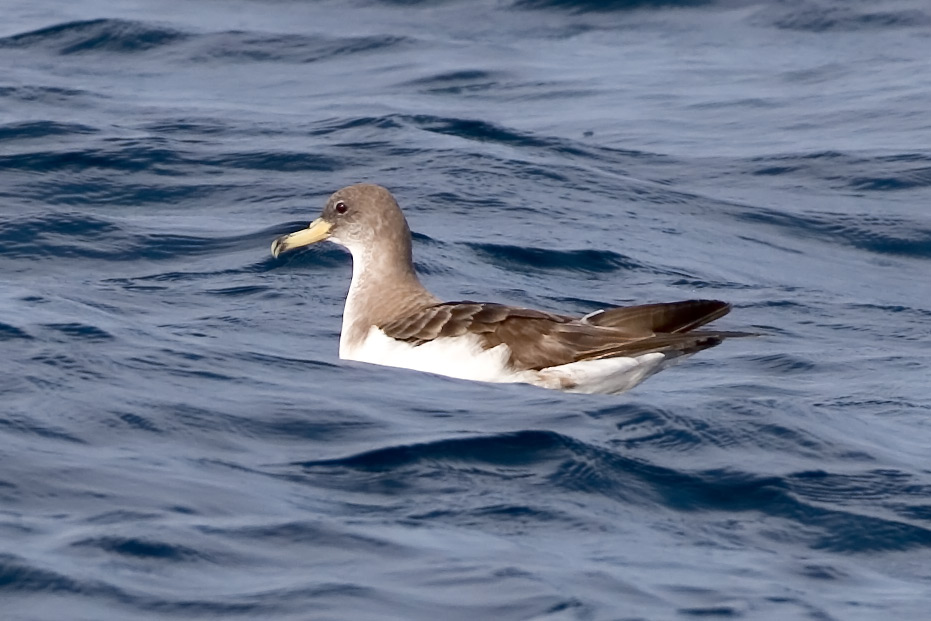Cory's shearwater
(Calonectris diomedea)

Description
C.diomedea has a length of 45-56 cm and a wingspan of 112-126 cm,with a brownish-gray color on the dorsal and white or slightly grayish side on the ventral face and the white wings bordered to brown on the lower parts.The beak is sturdy and studded,with the top yellowish.Besides being the largest procelariídeo of the Atlantic,it is the only one that can be observed to fly high,being able to elevate itself gliding in thermal currents.It is easily distinguished from other seabirds by the very characteristic type of flight,as they fly normally producing an arch between the tips of the wings,differing from the other procelariiform birds,which fly with the tips of the wings aligned.In addition to the position of the wings,the flight profile is characteristic,with long periods of planing scraping the crests of the waves,always with the wings inclined and slightly angulated behind.The beats are slow,with visibly flexible wings.It usually flies against the wind,alternating up to a few meters above the waves with periods of flying flush.When at rest they form large groups (therafts ) with the birds in constant movement,but predominating the birds with their head turned towards the side from where the wind blows.The species feeds on small pelagic fish and cephalopods,occasionally acting as a scavenger,taking advantage of the remains of large fish,cetaceans or other floating animals.In the sea it has behavior gregarious,forming great groups known by rafts as they rest floating in dense spots.Hunting in groups,being able to dive deep in search of prey,reaching more than 15 meters of depth.Although the species is quiet at sea,at nightfall the breeding colonies are noisy,with the adult individuals issuing strident calls,differentiated according to sex,very characteristic.The bird only goes to earth to breed,generally staying on the high seas.Monogamous,it nests on coastal cliffs and in islets,digging coarse burrows in which it deposits a single egg of white color.The offspring are fed by both parents who for that purpose regurgitate a protein paste directly into the chick's beak.The pups emerge from the nests in the fall,leaving immediately for the sea,where they remain from 7 to 10 years until they reach sexual maturity and return to the place of origin to nest.
Taxonomic tree:







